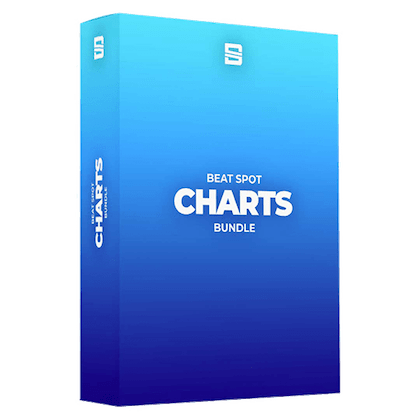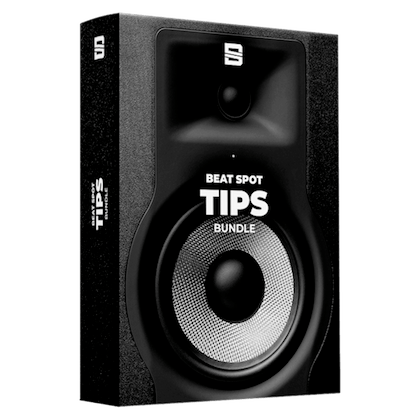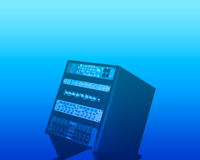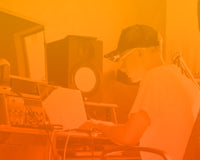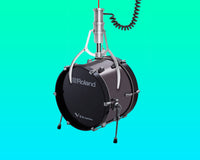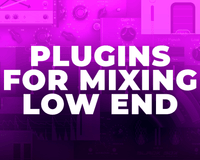Table of Contents
- Ah, reverbs.
- What does a reverb do in the end?
- 3 critical elements of a reverb
- The Main Controls of a Reverb
- Additional Controls of a Reverb
- Damping
- Reverb density
- Early Reflection Level
- Modulation Depth
- High-Frequency Attenuation
- Low-Frequency Attenuation
- Design the sound
- Types of Reverbs
- Our top 5 reverb picks.
Ah, reverbs.
I spent years just tweaking them 'till they sounded good to my ears. Don't get me wrong, that's obviously fine. But knowledge is power, so why don't we learn together what makes a reverb sound in a certain way?
Let's jump ahead and find out.
What does a reverb do in the end?
Reverberation is nothing more than a sound bouncing off of surfaces. When a signal is emitted (synthesizer, a kick drum, a snare drum, etc.), sound waves will travel away from the source in all directions.
These waves will continue until they reach a surface, which will both absorb and reflect the wave’s energy. Generally, the surface’s material will determine the amount of reflection and its tone.
3 critical elements of a reverb
The initial sound
It is the start of everything. Your music goes straight into the "room" until it hits a surface, making the first reflections happen (also known as "Early Reflections")
Early reflections
They are the first hits of the original source NOT absorbed by walls and objects. Early reflections, still in the space, will continue traveling until they too reach surfaces. Again, energy will be consumed, the waves’ strength will be decreased, and further reflections will occur.
Late reflections
Our last ingredient. They're the result of the early reflections hitting the room generating those new reflections. In terms of volume, they are the lowest.
The Main Controls of a Reverb
Decay Time
Decay is the time required for the reflections (reverberation) to die away. If you set your reverb to a 6 seconds decay, your echo will last 6 seconds before getting silent. This is the with the ROOM, the most essential parameter to check to define your own sound.
Dry/Wet/Mix Knob
This control allows you to decide the amount of reverberation (which is the WET signal) and mixes it with the original sound (DRY).
Pre-Delay
Pre-Delay is the amount of time between the original dry sound and the audible onset of early reflections and reverb tail. It is basically a delay at the start of the reverb. The higher it will be, the more time will take to the reverb to start!
Size
Size is used as a scalar for some/all of the delay lengths that make up the digital reverb network. A smaller Size value will reduce the length of the delays in the reverb algorithm, while larger Size values increase the range of the delays.
Additional Controls of a Reverb
Damping
If sounds bounce around in a hall with hard surfaces, the reverb's decay tails will be bright and more defined. While with soft materials, the reverberation will sound darker. The Damping controls the hardness of surfaces.
Reverb density
Lower densities give more space between the reverb's early reflections and late reflections. Higher values place these closer together.
Early Reflection Level
These reflections tend to be more defined and sound more like “echo” than “reverb.” Prominent early reflections tend to work better with sustained sounds, such as vocals and pads, than percussive sounds.
Modulation Depth
To create more variation in reverb sounds, modulation adds subtle changes to the reverb characteristics. Increase modulation depth if the reverb sound needs more “animation.”
High-Frequency Attenuation
This reduces the high frequencies going into the reverb. If your reverb sounds metallic, reduce the highs starting at 4–8kHz.
Low-Frequency Attenuation
Use this to reduce low frequencies entering the reverb. This can prevent a muddy, indistinct sound that takes focus away from the kick and bass. Try attenuating from 100–200Hz on down.
Design the sound
When the Size parameter is increased in digital reverb, you will often hear the following effects:
- A slower attack to the reverb
- Less metallic decays
- If modulation is used in your reverb, it may sound less noticeable, or less chorused when the Size parameter is increased.
While when it's decreased:
- A faster, tighter attack to the reverb
- A more metallic sound, in many cases.
- Fewer discrete echoes in the reverb onset, for a smoother sound with percussion.
- Stronger modulation effects (if modulation is engaged).
Types of Reverbs
Room Reverb
The most natural reverb type is room. A room is a space with walls. It doesn’t get much simpler than that. This gives a natural color and liveliness to a sound. They also sound like a more intimate space and can give the impression that all of the music is being played right in front of you. When we’re going for a natural, in-person, live kind of sound, room reverb is the right choice.
This type of reverb suites well drums, percussions, and basses.
Spring Reverb
A spring reverb unit is comprised of three main components: one or two drivers, metal coils housed in a pan and one or two pickups. The combination of the pan and springs is referred to as a “tank.” Springs are low-frequency focused in a particular way.it’s The opposite of a plate reverb. Our ear gets the low frequencies before the higher ones, which tells our lizard brains that the spring is “dark” sounding.
Plate Reverb
Plate reverb is a thin sheet of metal, suspended via springs (or sometimes clamps) under tension inside a rigid frame. A transducer (similar to the voice coil of a speaker) is used to vibrate the plate, and then contact mics on the surface of the plate to pick up the vibrations. Plate reverbs sound very dense and bright, which makes them useful for vocals and drums.
Our top 5 reverb picks.
- Lexicon PCM Native Reverbs
- All the Valhalla suite
- Fab Filter Pro R
- Ableton Live's Reverb
- TAL Reverb (FREE)

